Pinarello Dogma F: first ride on the new flagship race bike
Our first impressions of the new bike that Ineos Grenadiers will ride in the Tour de France
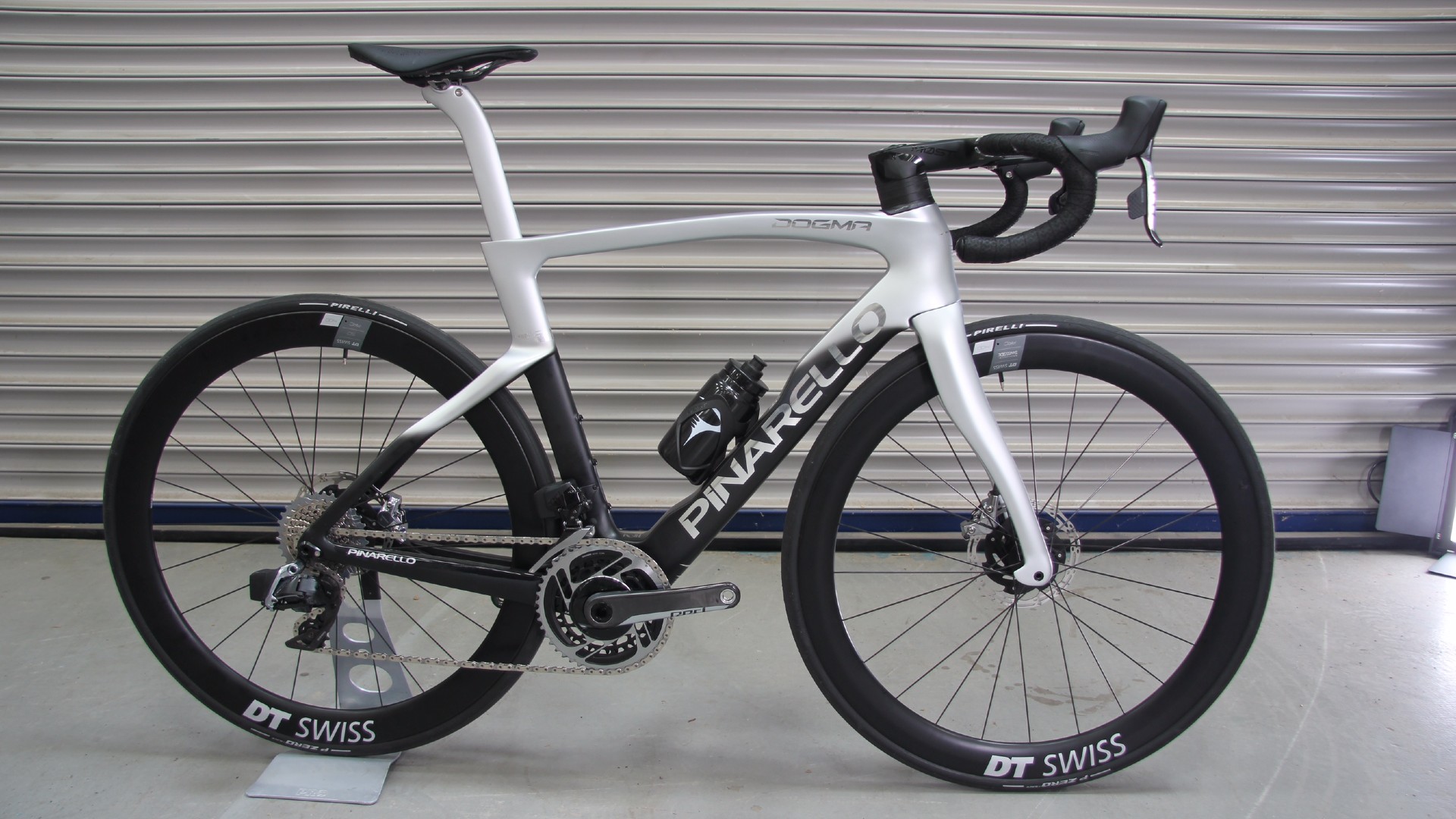
The Pinarello Dogma F seems to have put back some of the Italian style that the earlier, more data-driven Dogma F series bikes lacked. It's curvy and beautiful with a ride quality to match - and it's even faster: Pinarello's data shows an aerodynamic improvement over the outgoing F12 and lighter components shed grams off the frameset. Overall this bike is shaping up to be the best Dogma so far.
-
+
Beautiful ride quality
-
+
Stunning looking
-
+
Available in rim brakes
-
-
You'll need to find £12,000
You can trust Cycling Weekly.

When the Pinarello Dogma F8 was unveiled in 2014, we were invited to a secret media camp in Asolo, Italy. We stayed at the Albergo al Sole boutique hotel, where Fausto Pinarello presented the new bike. Then we rode it with him and Bernhard Eisel, who was with Team Sky at the time, through rustic, terracotta-coloured villages surrounded by cypress trees out into the foothills of the Dolomites.
Seven years, two Dogmas and one pandemic later, the launch of the Dogma F was conducted over Zoom, where we watched a video from our homes and then had a slightly awkward Q&A with the R&D team afterwards.
However, Pinarello did ship a bike to my home address in Surrey: although Box Hill is hardly Monte Grappa I would still get to do a first ride before the embargo date, and in some ways it might be a fairer test without Fausto gesticulating from his own custom fluoro Dogma and eagerly awaiting our feedback.
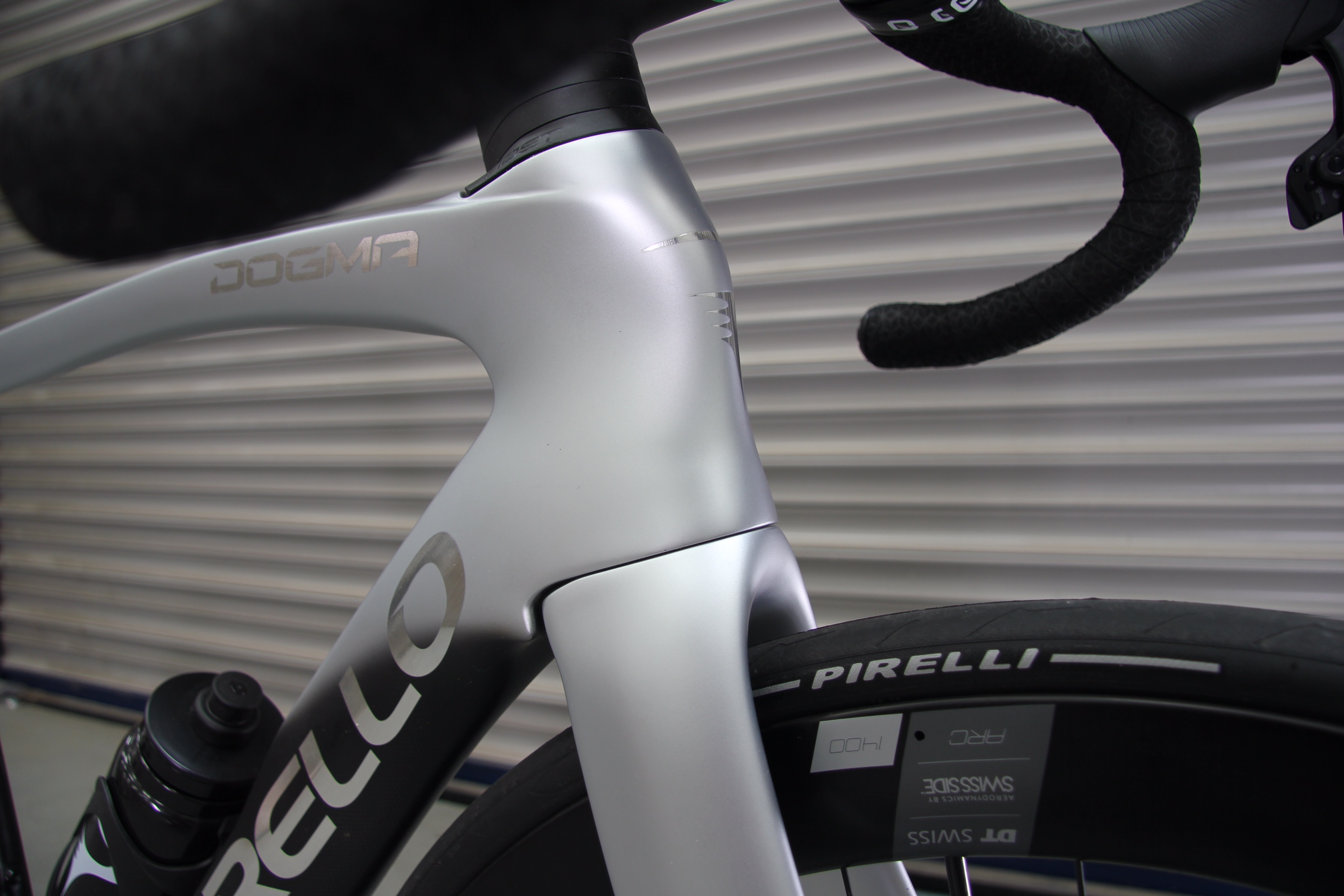
Unboxed and assembled in my sitting room, the new Dogma F did indeed look incongruously iconic. Perhaps the ordinary English surroundings exaggerated its exotic Italianness, but ever since the F8 - which was almost disappointingly plain-looking compared to the curvaceous Dogma 65.1 Think2 it replaced - the Dogma has been getting its shapeliness back, and for me this is the best-looking Dogma F series yet.
In the meantime of course there have been the F10 and the F12. This time Pinarello decided to drop the numerical sequencing and stick with just ‘F’. “A Pinarello Dogma is an icon,” said the press release. “It goes beyond a number or superficial classifications. We chose a simple F.”
When Pinarello brought in Dimitris Katsanis and Jaguar to design the aerodynamic F8, for a lot of people the Dogma lost something - in its aesthetics at least. With the new Dogma F it’s as if Pinarello just couldn’t resist gradually putting back the passione. That gets my approval.
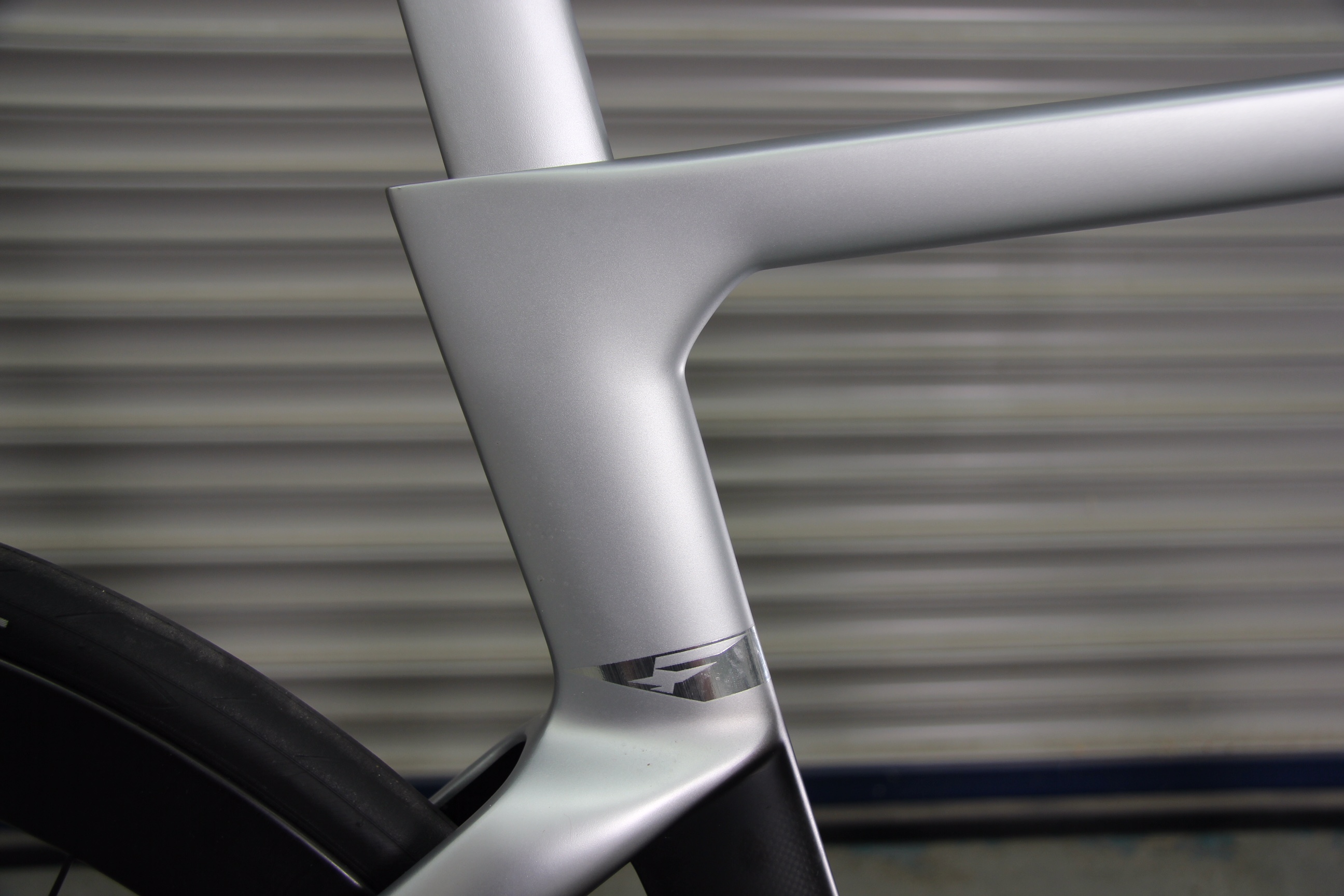
Of course the aerodynamic gains and weight losses have still been accomplished. The new Dogma F is marginally faster than the F12, but only by single-figure watts since Katsanis and co had done a pretty good job on the original F8 redesign.
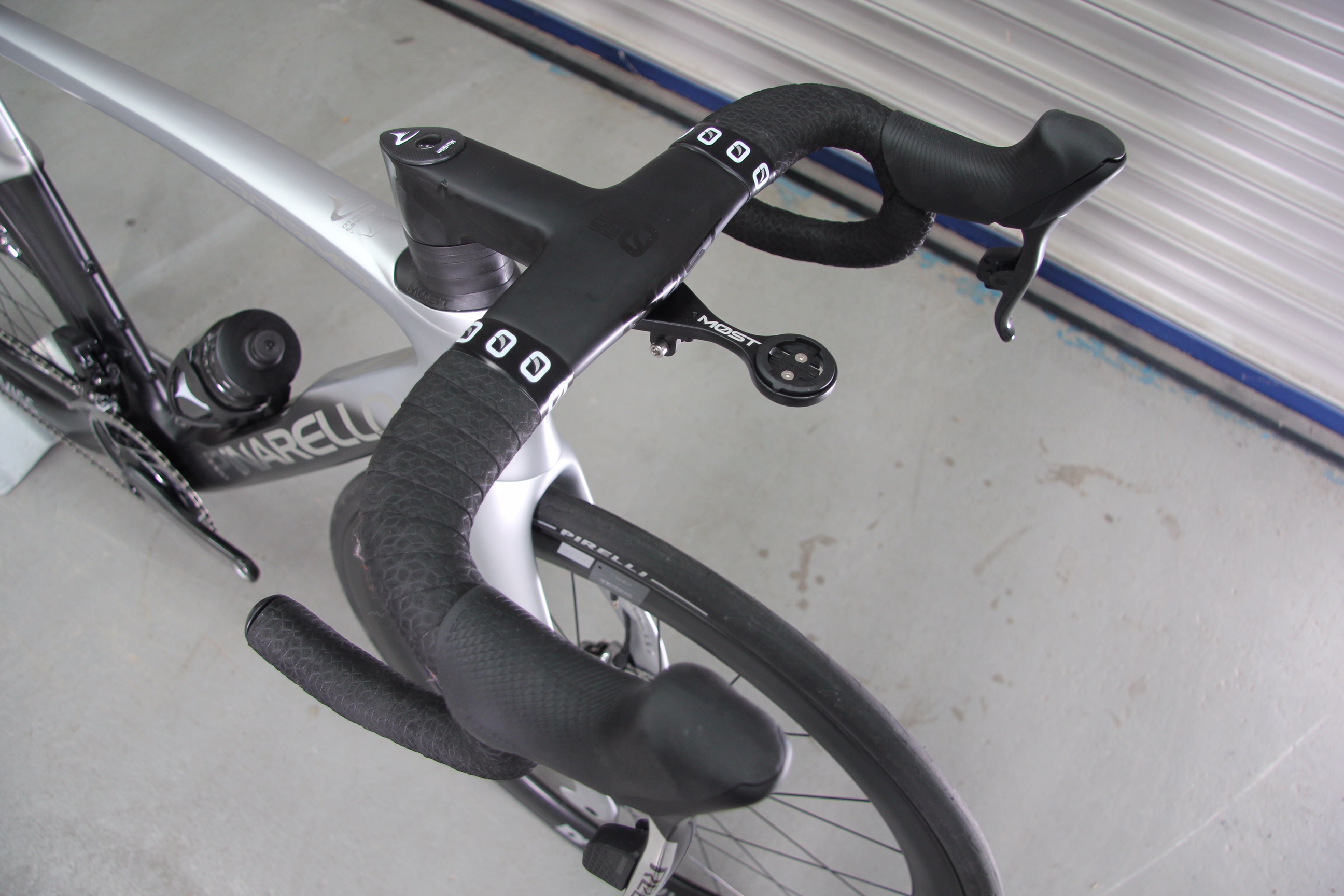
Fausto Pinarello insists on keeping 850g as a target weight for the size 53 for reasons of handling, reliability and durability, so 265 grams off the frameset have been saved via a lighter and rather lovely titanium 3D-printed saddle clamp, a lighter MOST Talon Ultrafast integrated cockpit, a lighter Onda fork, a lighter seatpost and lighter thru-axles. The frame itself is made from high-modulus Torayca 1100 carbon, like the F12.
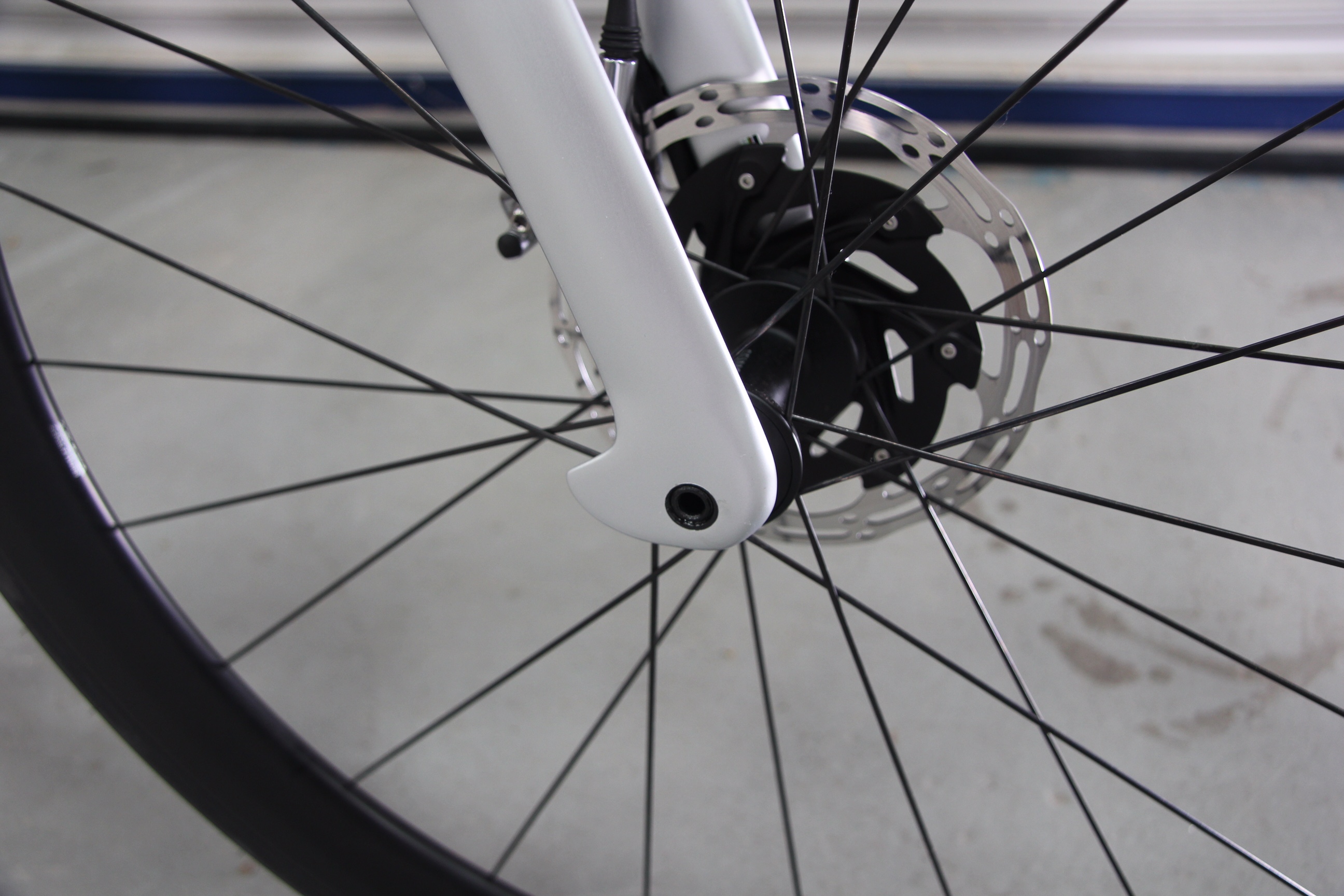
Pinarello is going against the grain by producing the Dogma F in both disc and rim-brake versions. Ineos Grenadiers will continue to be the only team in the WorldTour to ride rim brakes and will be riding them at the Tour de France but Pinarello expects 80 per cent of Dogma sales to be disc brake - and that’s why I was sent a disc-brake bike with the top SRAM Red eTap spec.
With 11 sizes on offer you can’t fail to get a great fit - and the new MOST Talon Ultrafast bar comes in 16 sizes too. Add two seatposts with different setback and you get a total of a 352 size combinations according to Pinarello.
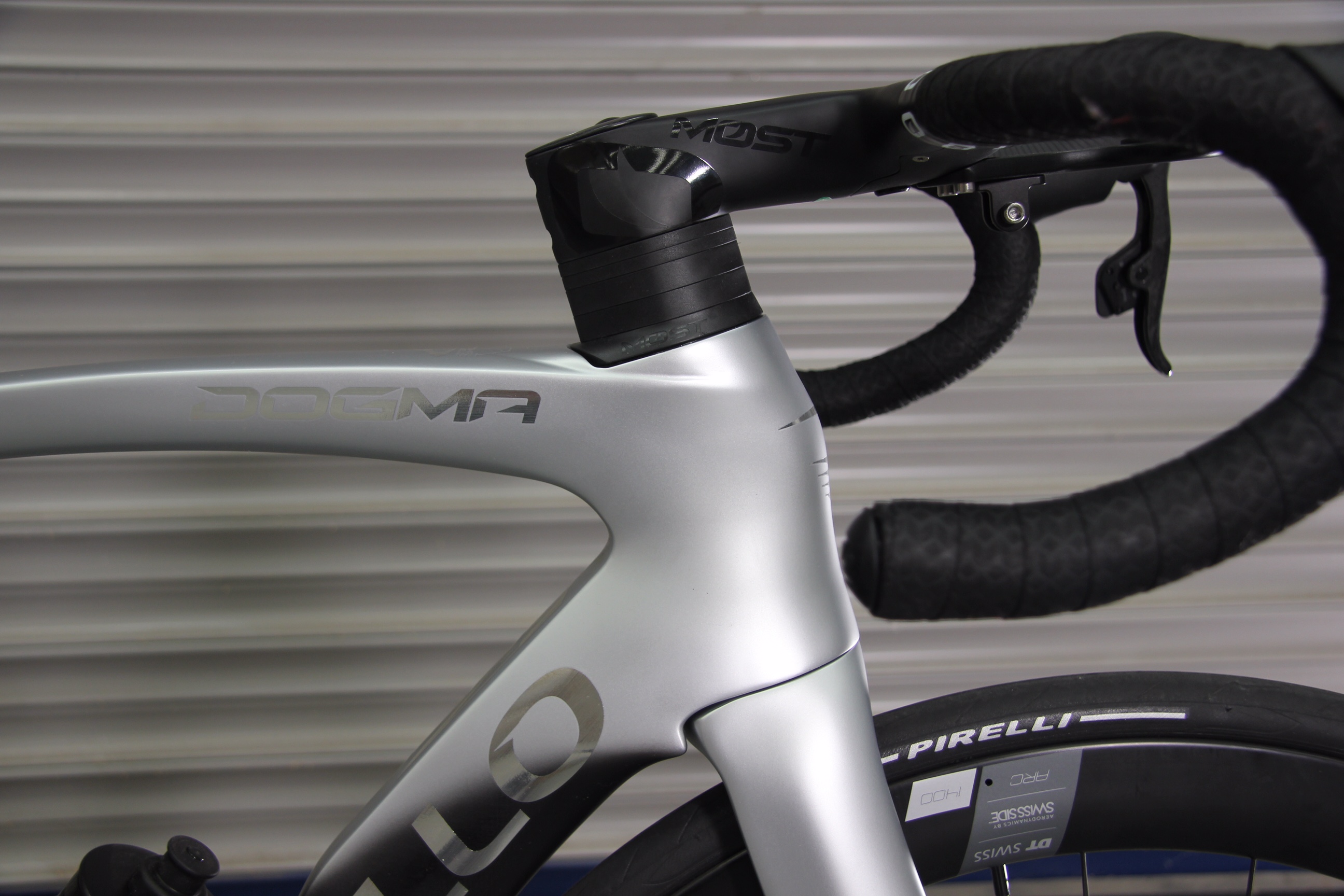
Pinarello has also settled on a geometry that works for everyone - both pro racer and recreational rider - and that hasn’t changed for the new Dogma.
As expected, I found all I needed to do was set my saddle height and I felt totally comfortable, having specified the stem length and bar width of the Talon Ultrafast in advance.
Putting the bike together I was not only struck by the beautiful, flawless finish and perfect paint but also by the details such as the way the small Torx bolts in the back of the seat tube that operate the seatpost wedge (very nice in itself) feature a tiny little recommended torque measurement next to them in a discreet silver decal.
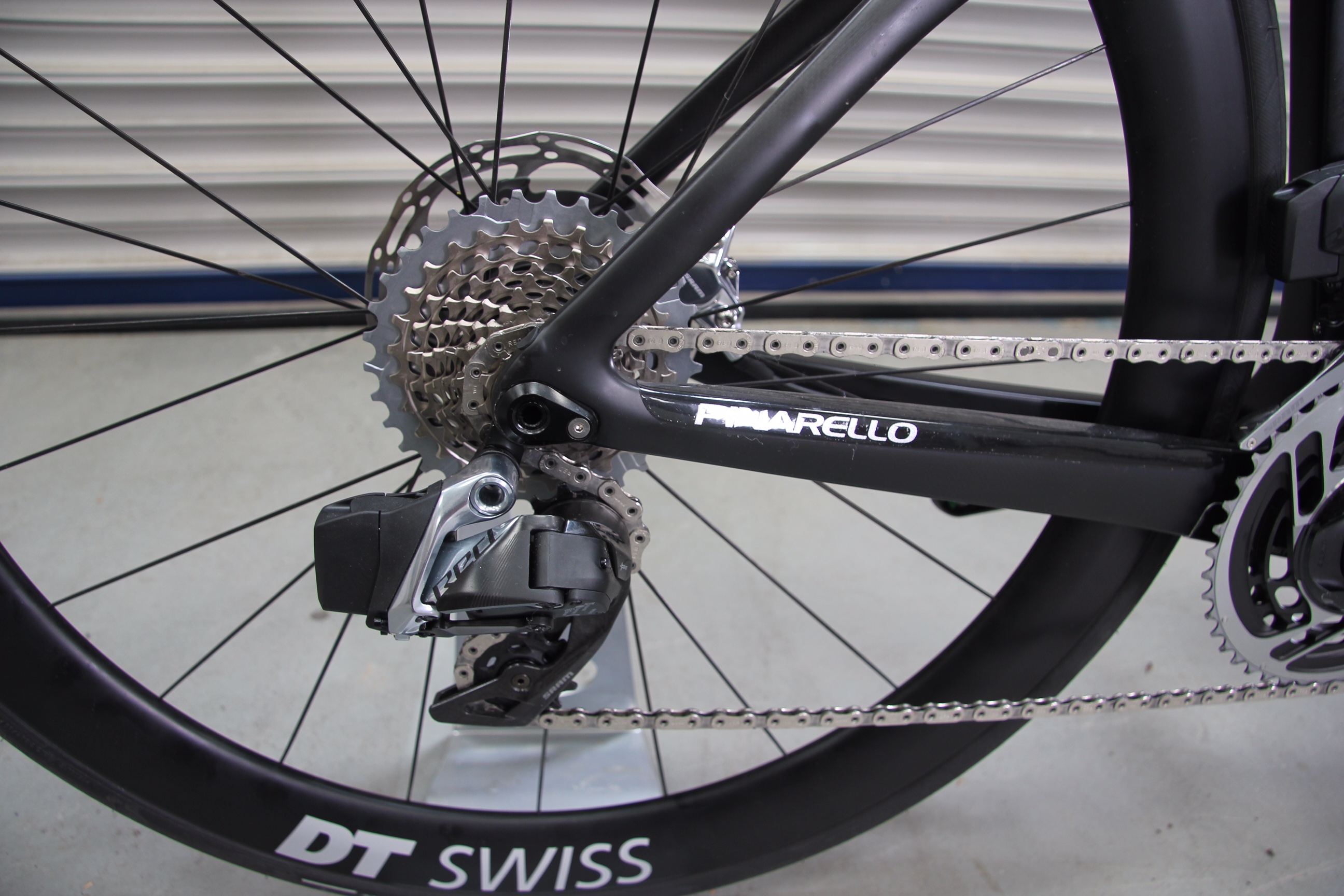
With the SRAM Red components paired, I headed out on my usual 24-mile loop. It starts on a short, steep hill which usually gives a clue as to a bike’s stiffness out of the saddle from the beginning. The Dogma wasn’t brutally stiff like some pro-level bikes can be. It felt springy and lively, as if it was giving back some of its kinetic energy rather than simply ensuring none was wasted, as the cliche goes. It's also wonderfully light of course - just over the UCI weight limit of 6.8kg with the SRAM Red eTap disc-brake build.
On the other side and going down a mile-long downhill section it felt similarly energetic and I was surprised to see a good average speed that I wasn’t expecting. I was encouraged to keep riding hard.
On the steepest section it felt so good that I hardly needed to change down - and ended up with a third-fastest time on a Strava segment I’ve ridden 110 times and my fastest in two years.
I was on some potholey lanes just north of Gatwick airport and it was getting dark but my enjoyment levels were easily as high as they had been that day on airy Monte Grappa seven years ago with the F8.
I kept pushing, riding the whole course the fastest I’ve ridden it in two years with an average speed of 21.6mph - with a feeling of much less effort.
Pinarello has made a point of not distinguishing between aero bikes and climbing bikes, and for me it's the right decision: the Dogma F can climb, descend, it's aerodynamically efficient on the flat, it's comfortable and it handles like a dream.
The bike had to go back to Pinarello the day before the launch so, just like at the launch in Asolo, I only managed to do a single ride on it.
Maybe the slightly clinical-looking F8 that was built by robots for robots (as Team Sky were regarded at the time) needed the romantic Italian backdrop to convince us that Pinarello hadn’t changed despite building a bike based on data rather than passione, but the Dogma F didn’t.
In the case of the Dogma F I concluded that you can take the bike out of Italy but you can’t take Italy out of the bike.
I’ve been promised the Pinarello Dogma F back for a full review post-launch - and I can’t wait to ride it again.
See the launch story for details of pricing and availability.

Thank you for reading 20 articles this month* Join now for unlimited access
Enjoy your first month for just £1 / $1 / €1
*Read 5 free articles per month without a subscription

Join now for unlimited access
Try first month for just £1 / $1 / €1
Get The Leadout Newsletter
The latest race content, interviews, features, reviews and expert buying guides, direct to your inbox!
Simon Smythe is a hugely experienced cycling tech writer, who has been writing for Cycling Weekly since 2003. Until recently he was our senior tech writer. In his cycling career Simon has mostly focused on time trialling with a national medal, a few open wins and his club's 30-mile record in his palmares. These days he spends most of his time testing road bikes, or on a tandem doing the school run with his younger son.
-
 'I'll take a top 10, that's alright in the end' - Fred Wright finishes best of British at Paris-Roubaix
'I'll take a top 10, that's alright in the end' - Fred Wright finishes best of British at Paris-RoubaixBahrain-Victorious rider came back from a mechanical on the Arenberg to place ninth
By Adam Becket Published
-
 'This is the furthest ride I've actually ever done' - Matthew Brennan lights up Paris-Roubaix at 19 years old
'This is the furthest ride I've actually ever done' - Matthew Brennan lights up Paris-Roubaix at 19 years oldThe day's youngest rider reflects on 'killer' Monument debut
By Tom Davidson Published
-
 'One of the hardest races I've ever done in my life' - Tadej Pogačar finishes runner-up on Paris-Roubaix debut after crash
'One of the hardest races I've ever done in my life' - Tadej Pogačar finishes runner-up on Paris-Roubaix debut after crashWorld champion reacts to 'extremely hard' battle with Mathieu van der Poel
By Tom Davidson Published